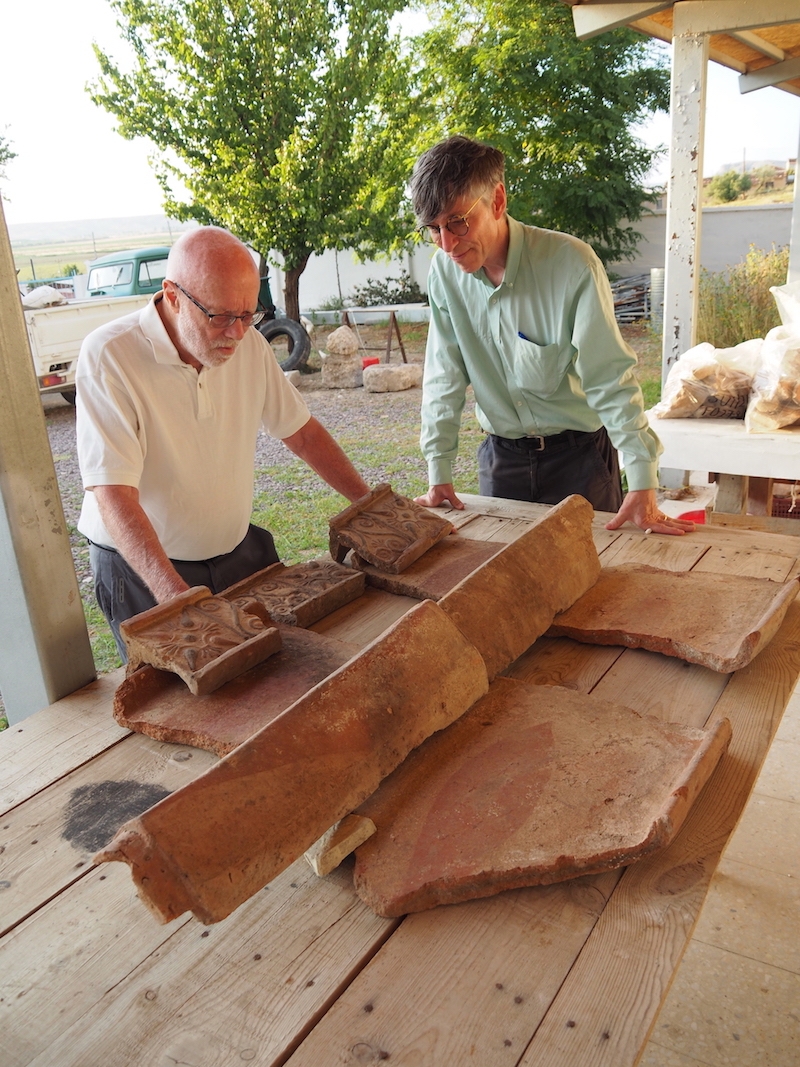Past Events
Interested in Cotsen events? Sign up for our mailing list.Dr. Ayana Omilade Flewellen, Assistant Professor, Department of Anthropology, UC Riverside
Wednesday, October 21st, 12:00pm - 1:00pm PT
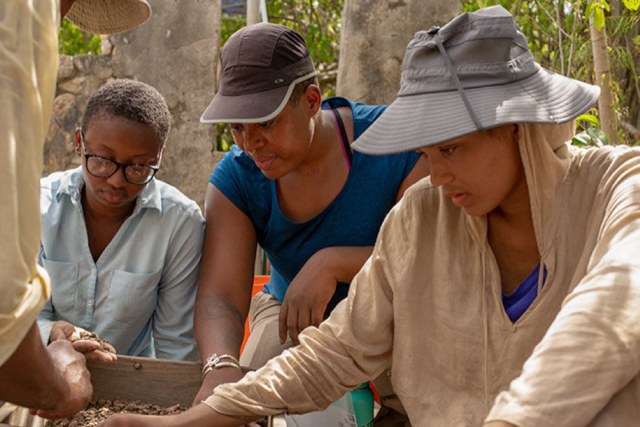 Amid racialized servitude, sexual exploitation, and economic disenfranchisement, that marked the post-emancipation era in the United States, African American women were styling their hair with combs, lacing glass beads around their necks, dyeing coarse-cotton fabric with indigo-berry and sweetgum bark, and fastening buttons to adorn their bodies and dress their social lives. Through an analysis of material culture and documentary data, Dr. Flewellen’s work examines the complex interplay between structural forms of oppression and agency by focusing on the ways African Diasporic women used dress to negotiate racism, sexual exploitation, and exploitive capitalism from slavery through freedom. This talk will outline the flesh and texture of Black Feminist Archaeology, as a theoretical and methodological framework that centers on the lived experiences of enslaved Africans and their descendants as a means for the production of knowledge. Focusing on Dr. Flewellen’s research on gendered African Diasporic sartorial practices, this presentation aims to articulate Black Feminist Archaeology at the interstices of digital humanities, historical archaeology, and Black feminism.
Amid racialized servitude, sexual exploitation, and economic disenfranchisement, that marked the post-emancipation era in the United States, African American women were styling their hair with combs, lacing glass beads around their necks, dyeing coarse-cotton fabric with indigo-berry and sweetgum bark, and fastening buttons to adorn their bodies and dress their social lives. Through an analysis of material culture and documentary data, Dr. Flewellen’s work examines the complex interplay between structural forms of oppression and agency by focusing on the ways African Diasporic women used dress to negotiate racism, sexual exploitation, and exploitive capitalism from slavery through freedom. This talk will outline the flesh and texture of Black Feminist Archaeology, as a theoretical and methodological framework that centers on the lived experiences of enslaved Africans and their descendants as a means for the production of knowledge. Focusing on Dr. Flewellen’s research on gendered African Diasporic sartorial practices, this presentation aims to articulate Black Feminist Archaeology at the interstices of digital humanities, historical archaeology, and Black feminism.
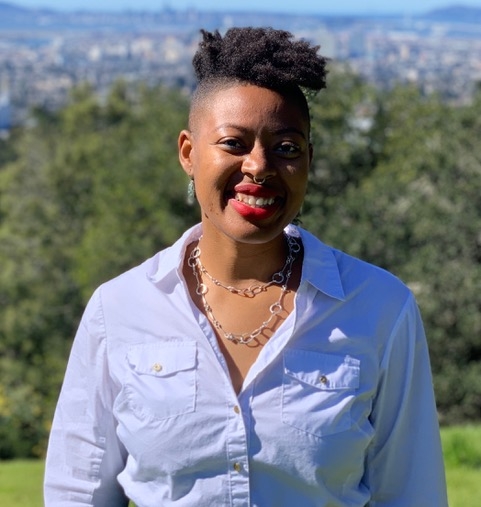
Register for this Cotsen Virtual Pizza Talk here! You will receive instructions on viewing the talk after registering.
Contact Sumiji Takahashi
Email sutakahashi@ioa.ucla.edu
Phone
Sanchita Balachandran, Senior Lecturer in Near Eastern Studies & Associate Director, Johns Hopkins University & Museum
Wednesday, October 14th, 12:00pm - 1:00pm PT
What can we know about the lived experiences of the ancient artisans who were making the now-iconic red and black ceramics in Athens between the 6th and 4th centuries BCE? Given that the potters and painters of Athens comprised a diverse group of practitioners that included Athenian citizens, immigrants and migrant workers, women and children, freed people and enslaved people, can the pots they made tell us about the conditions of their lives? Interdisciplinary approaches incorporating experimental archaeology, sensory experience, conservation documentation and digital imaging techniques may offer us new ways to “excavate” the surfaces of extant ceramics in museums, most of which were collected without archaeological context. This talk looks at how examining ancient ceramics from the perspective of production—from “preparatory” drawings on the surfaces, to the painted images, to the fired colors of the vessels—allows us to approach ancient people at work, in the moment of production, and raises questions about who they really were.

Register for this Cotsen Virtual Pizza Talk here! You will receive instructions on viewing the talk after registering.
Contact Sumiji Takahashi
Email sutakahashi@ioa.ucla.edu
Phone
Dr. C. Brian Rose, Professor of Archaeology & Curator in Charge, Mediterranean Section, University of Pennsylvania & Museum
Wednesday, October 7th, 12:00pm - 1:00pm PT
Drawing on personal experience, this lecture explores the relationship between archaeology and conservation at three sites in Turkey, focusing on both object and architectural conservation. The speaker was co-director at Troy for 25 years (1988-2012), and director of Gordion since 2013.
Register for this Cotsen Virtual Pizza Talk here! You will receive instructions on viewing the talk after registering.
Contact Sumiji Takahashi
Email sutakahashi@ioa.ucla.edu
Phone
Kristine Martirosyan-Olshansky, Postdoctoral Scholar, CIoA, UCLA
Alan Farahani, Assistant Professor of Anthropology, UNLV
September 16, 2020, 1:00pm - 2:00pm PST
Virtual Pizza Talk Series
This talk is a summary of research conducted at the archaeological site of Masis Blur, an early farming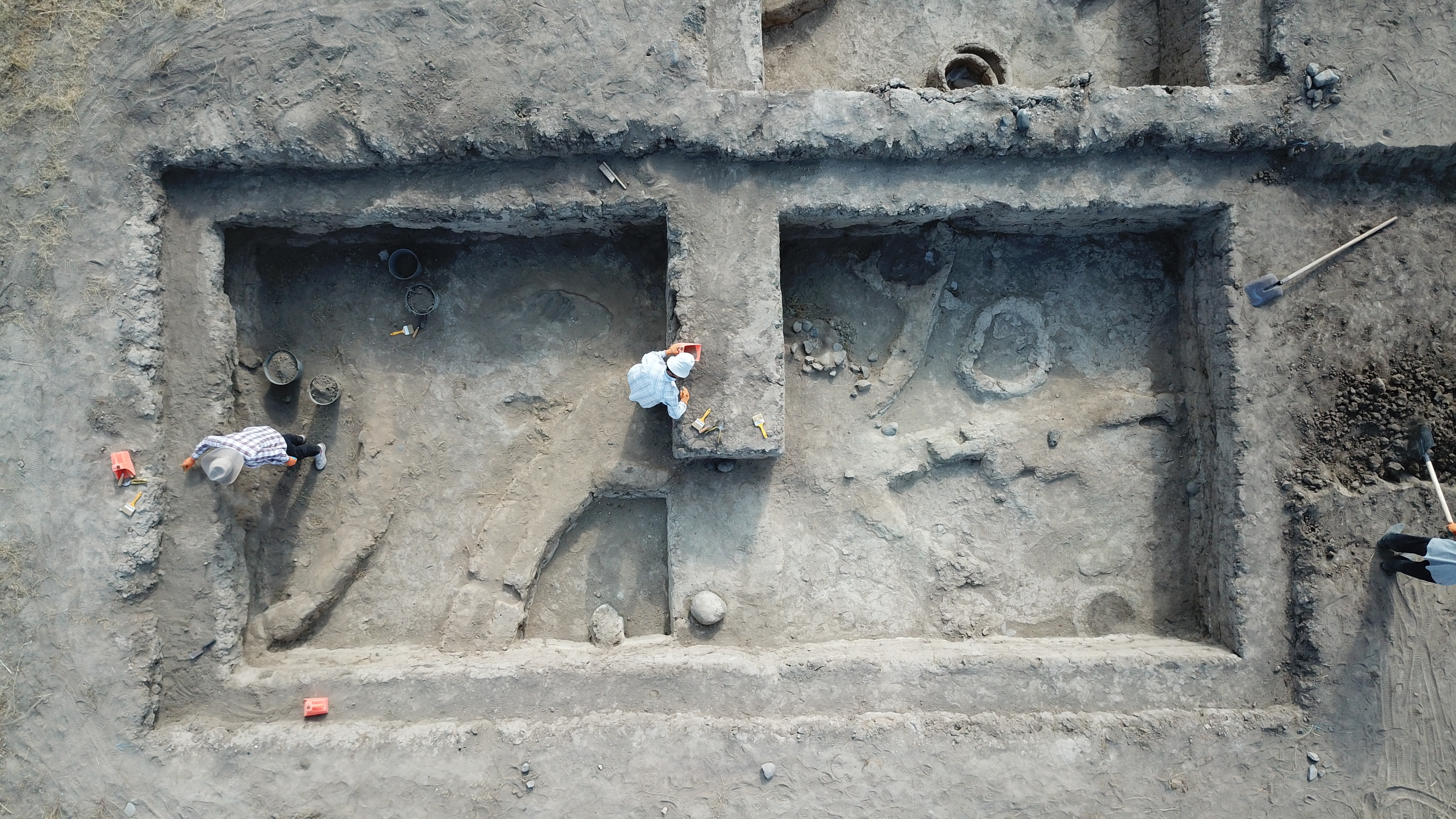
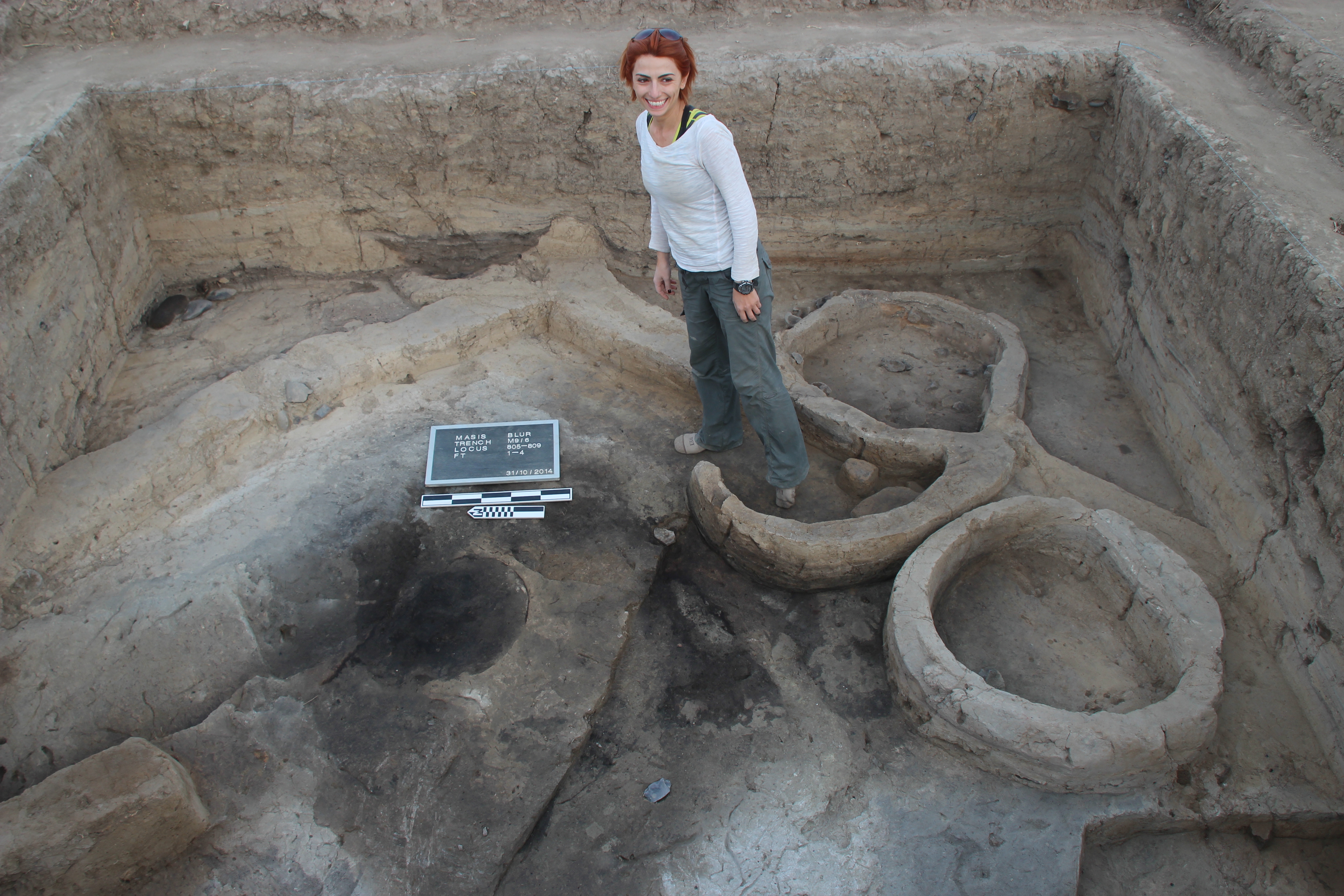
Alan Farahani is an Assistant Professor of Anthropology at the University of Nevada, Las Vegas. He is an anthropological archaeologist whose research focuses on how ancient agriculture was embedded in and influenced the social, political, and cultural practices of people in the past. His methodological expertise is paleoethnobotany, or the analysis of archaeological plant remains, as well as in the use of contemporary computational tools such as Python and R to effectively manage archaeological data. He has conducted fieldwork throughout the world, and has been working on the Masis Blur project since 2018.
Register for this Cotsen Virtual Pizza Talk here! You will receive instructions on viewing the talk after registering.
Contact Michelle Jacobson
Email mjacobson@ioa.ucla.edu
Phone
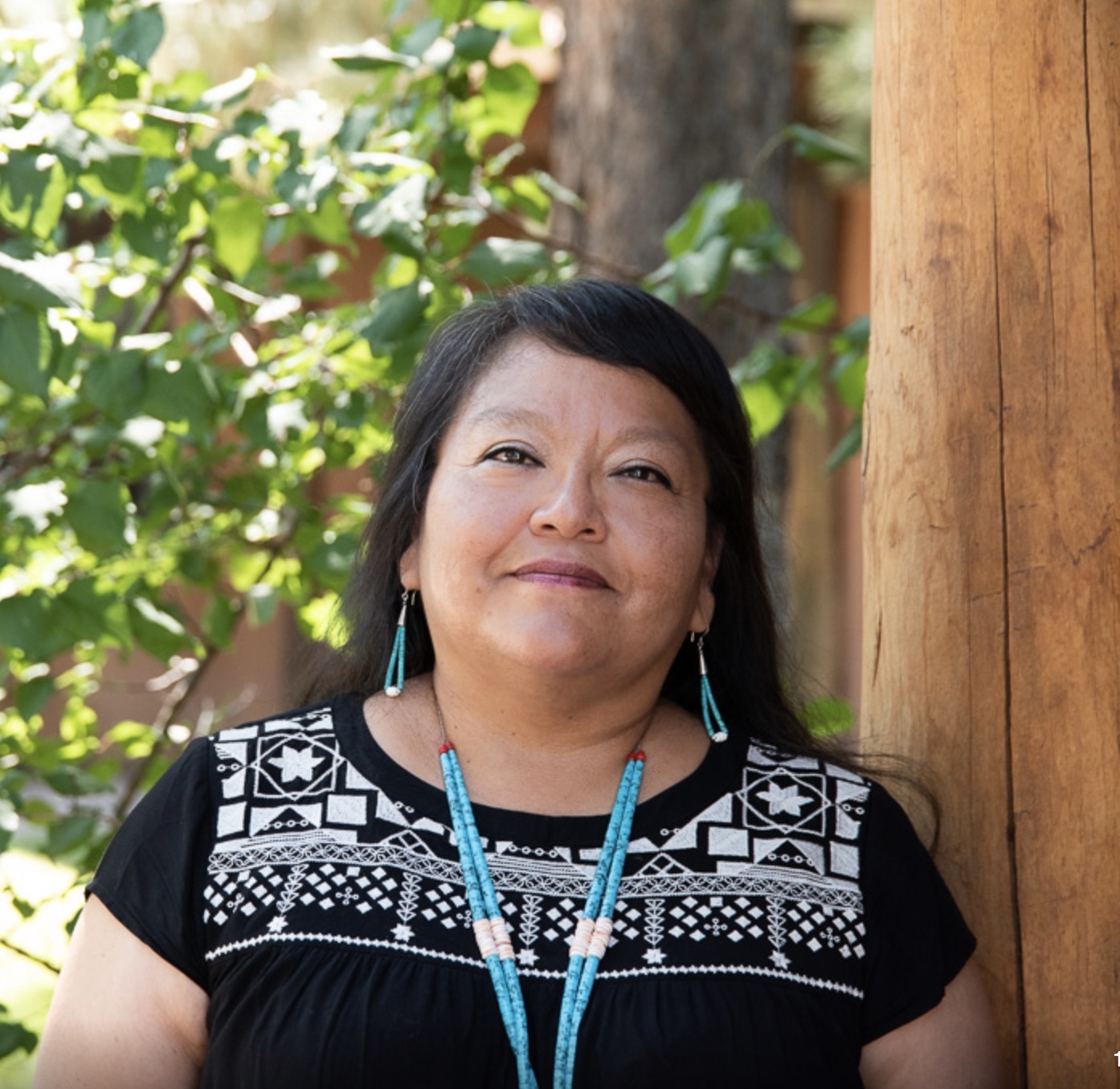 Davina Two Bears' research documents the history of the Old Leupp Boarding School (OLBS), a Federal Indian boarding school on the Navajo Reservation, from 1909 to 1942, as it explores Diné (Navajo) survivance within the context of this school. Two Bears employs decolonizing research methods framed by postcolonial theory to investigate the OLBS, which currently exists as a historic archaeological site. She explores how Diné children forced to attend the OLBS utilized their cultural foundations to meet the challenges imposed upon them by a settler society and relates the positive stories of Native survivance and resistance to assimilation achieved within the OLBS. Utilizing oral history interviews she conducted with Navajo elders and a critical review of archival records and historic photographs, Two Bears explores the history of the OLBS and the memories of Navajo students who attended the OLBS. Her research contributes to postcolonial anthropology as a study of culture change, decolonizing research, and Native American and Indigenous studies.
Davina Two Bears' research documents the history of the Old Leupp Boarding School (OLBS), a Federal Indian boarding school on the Navajo Reservation, from 1909 to 1942, as it explores Diné (Navajo) survivance within the context of this school. Two Bears employs decolonizing research methods framed by postcolonial theory to investigate the OLBS, which currently exists as a historic archaeological site. She explores how Diné children forced to attend the OLBS utilized their cultural foundations to meet the challenges imposed upon them by a settler society and relates the positive stories of Native survivance and resistance to assimilation achieved within the OLBS. Utilizing oral history interviews she conducted with Navajo elders and a critical review of archival records and historic photographs, Two Bears explores the history of the OLBS and the memories of Navajo students who attended the OLBS. Her research contributes to postcolonial anthropology as a study of culture change, decolonizing research, and Native American and Indigenous studies.
Davina R. Two Bears is Navajo from northern Arizona. She recently graduated from Indiana University (2019) with a PhD in anthropology with an emphasis in archaeology, and a PhD minor in Native American Indigenous Studies.
Register for this Cotsen Virtual Pizza Talk here! You will receive instructions on viewing the talk after registering.

Photo courtesy of the Old Trails Museum/Winslow Historical Society. The photo is of the front entrance of the OLBS, which later became the girls and boys dormitory. This picture was taken around 1915.
Contact Michelle Jacobson
Email mjacobson@ioa.ucla.edu
Phone
Caroline Arbuckle MacCleod, Ph.D. Fellow, University of British Columbia
Wednesday July 22, 2020 – 1:00pm
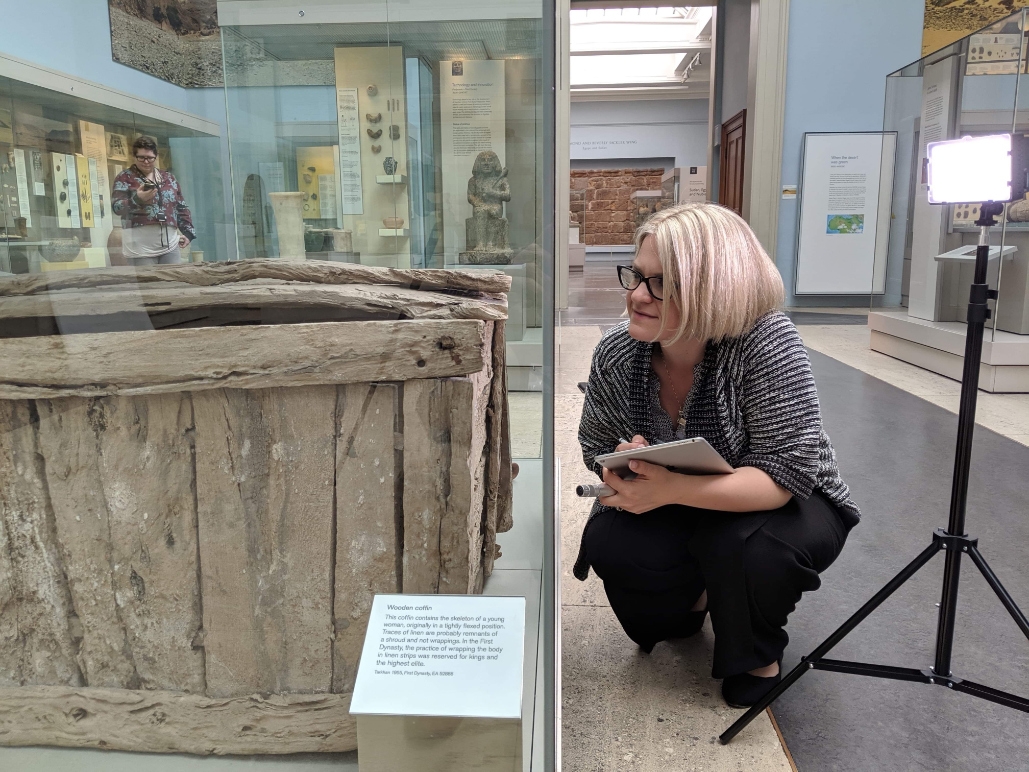 In ancient Egypt, the wooden coffin was considered one of the fundamental elements of a burial for wealthier individuals. It was a magical vessel that protected the deceased, and ensured that the owner could be transformed into a divine being in the afterlife. Due to the importance of these objects, potent magical talismans and symbols were placed around and in the coffin, and were often included in the decoration. Magical spells and rituals were also performed throughout the burial ceremony. In this talk, a new layer of ritual and magic is considered, hidden within the invisible joints of wooden coffins. In these areas, secret spells and magical red paint were added during construction. This may suggest the presence of educated carpenter priests, trained in the rituals needed to prepare the wood, as the first step in the creation of these potent vessels for the dead.
In ancient Egypt, the wooden coffin was considered one of the fundamental elements of a burial for wealthier individuals. It was a magical vessel that protected the deceased, and ensured that the owner could be transformed into a divine being in the afterlife. Due to the importance of these objects, potent magical talismans and symbols were placed around and in the coffin, and were often included in the decoration. Magical spells and rituals were also performed throughout the burial ceremony. In this talk, a new layer of ritual and magic is considered, hidden within the invisible joints of wooden coffins. In these areas, secret spells and magical red paint were added during construction. This may suggest the presence of educated carpenter priests, trained in the rituals needed to prepare the wood, as the first step in the creation of these potent vessels for the dead.
Please note, the talks will start at 1:00pm PT during the summer.
Contact Michelle Jacobson
Email mjacobson@ioa.ucla.edu
Phone
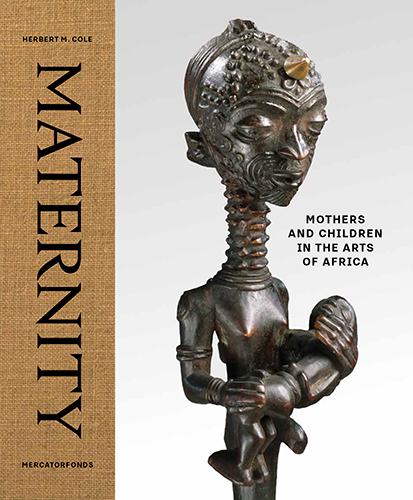 SPEAKER:
SPEAKER:
Dr. Herbert Cole
University of California, Santa Barbara
Professor Emeritus, Art History
In writing my latest (and probably last) book: Maternity: Mothers and Children in the Arts of Africa, two stereotypes emerged that I ran into more or less often as I researched the topic, and these ended up as "pet peeves" that I felt the need to address in my text: "fertility goddess" as a descriptor of Africn images of mothers with children, especially those shown suckling, and the word "doll" as applied to images of children used by many potential mother to help them conceive, or if pregnant, to make sure the pregnancy goes well and a healthy, handsome child is born. I will explore both of these stereotypes and show that both are ultimately racist words when applied to maternity and child images.
Suggested reading for the talk available here.
Register for this Cotsen Virtual Pizza Talk here! You will receive instructions on viewing the talk after registering.
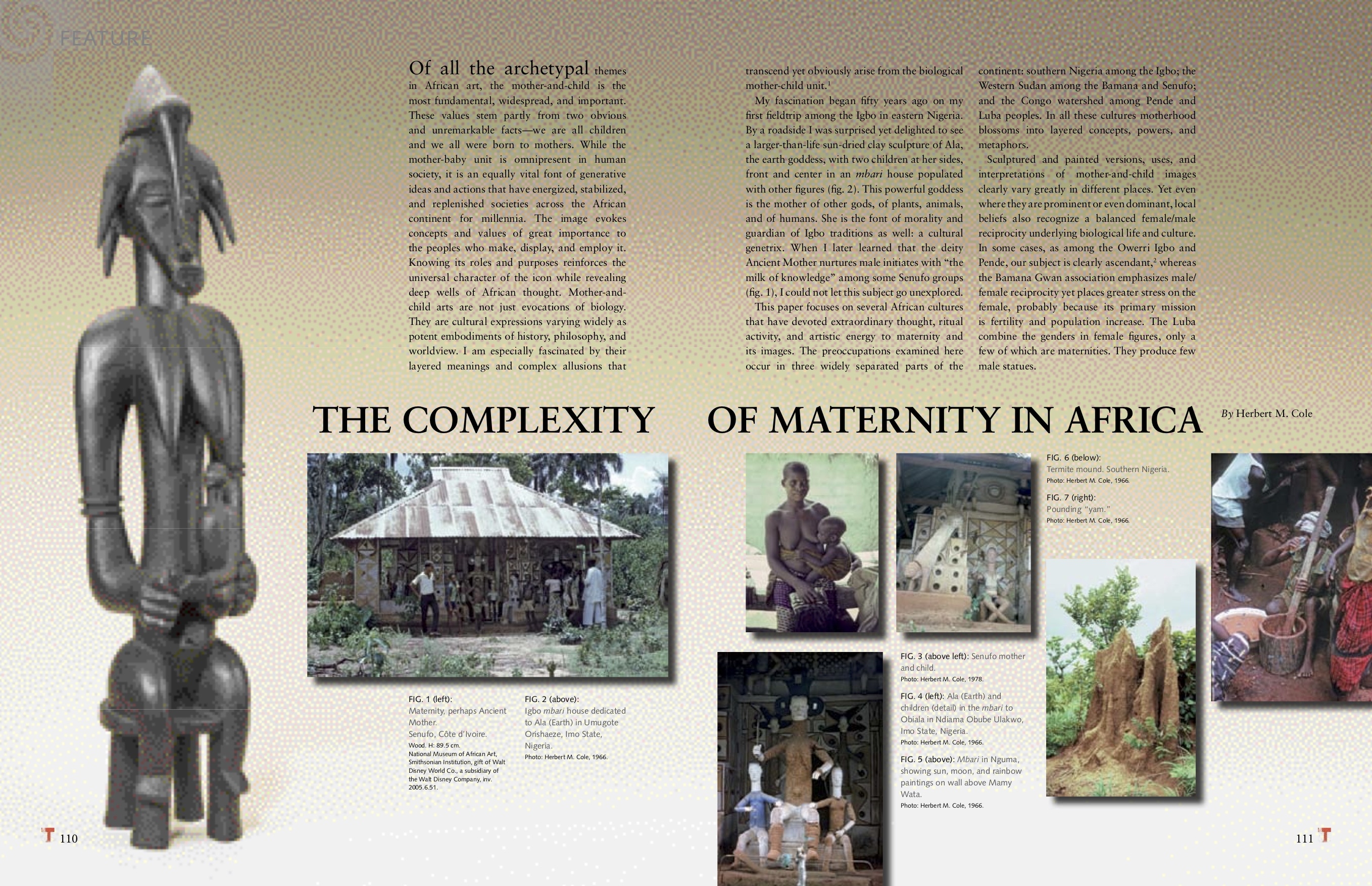
Contact Michelle Jacobson
Email mjacobson@ioa.ucla.edu
Phone
SPEAKER:
Rosemary A. Joyce
Professor and Chair of Anthropology
University of California, Berkeley
This talk builds on feminist scholarship criticizing a tacit distinction between household labor (as intimate, domestic, and ruled only by naturalized relations of sex and age) and extra-domestic labor to help advance understanding of gender and labor in societies of ancient Central America. Household production, the role of specific products of women's labor as standards of value and media of exchange, and the role of indigenous ontologies in which material animacy and animating spirits occupied central places in exchanges we might otherwise think of as economic will be considered.
Full abstract:
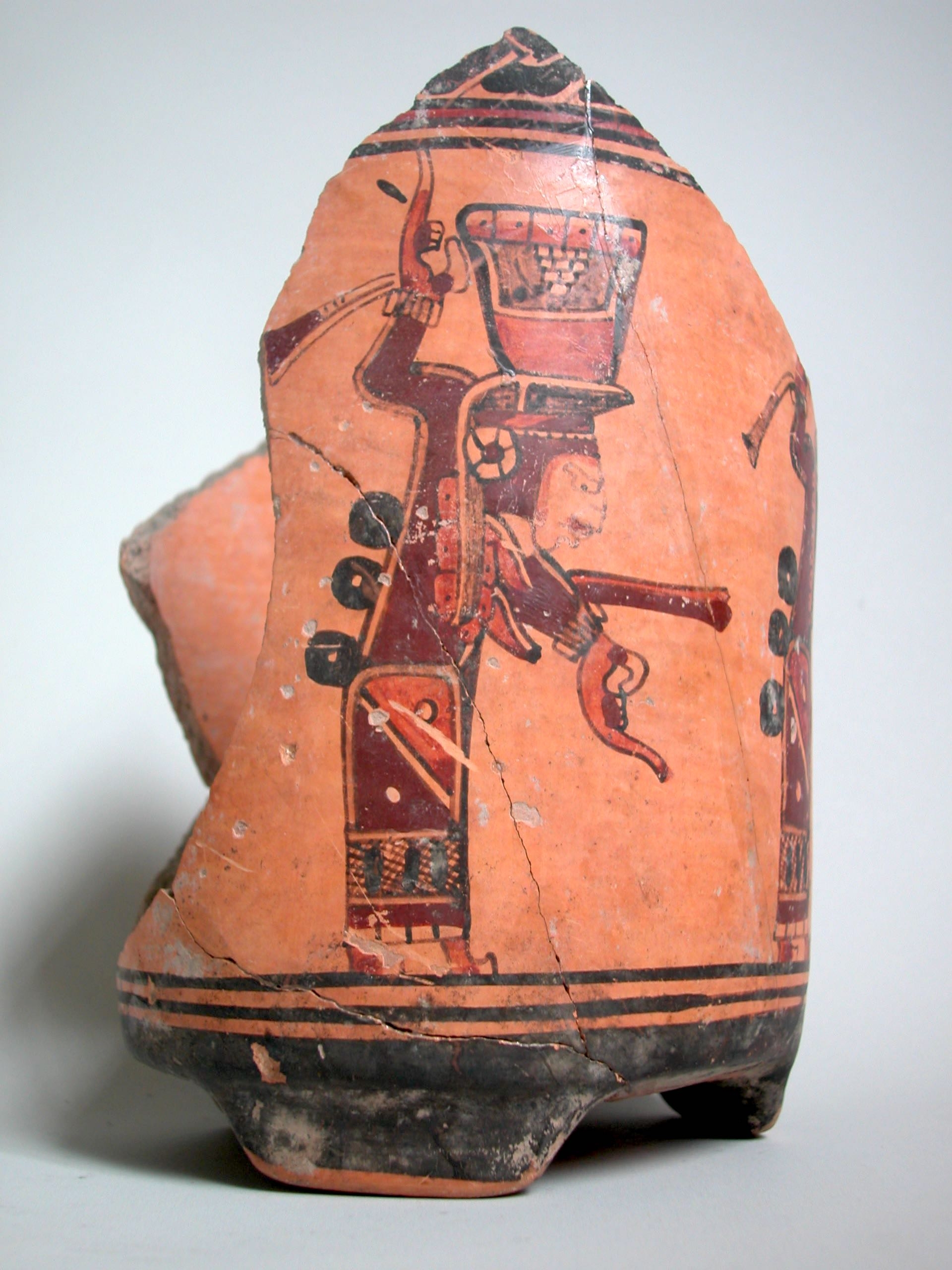 As renewed interest in inequality sparks a turn to the archaeologically documented past as a source of data for generalizing models explaining the roots of the contemporary economic reality, it is worth pausing to question how pasts that were shaped under far different social conditions can be treated as equivalent to the contemporary world of nation states and global economies. In this paper, I examine three sources of incommensurability that should be taken into account in any attempt to think from the past of economic relations to the present. The first of these examines how labor is conceived of, counted, and understood in these different situations. As feminist scholars of the contemporary economy have long noted, large areas of economic activity by women are routinely excluded in modern analyses. Such household maintenance work rests on a tacit distinction between household labor (as intimate, domestic, and ruled only by naturalized relations of sex and age) and extra-domestic labor. For the societies of ancient Central America, such a division simply did not exist. Not only did a large part of the organization of agricultural labor build on household relations; women's specialist craft production, in particular, was critical to economic relations. This leads to the second aspect of incommensurability that I consider: the identification and mobilization of standards of value and exchange. In these societies, cloth produced by women working in domestic spaces was one of the enduring standards of value, specifically important in tribute payments that established and perpetuated political hierarchies. Cloth's use in this fashion cannot be disentangled from the social relations in which it was embedded. Nor can the social relations which gave value to other key media used to measure value in economic exchanges be equated, even when the same social agents, women, have key roles in production, for example, in the cultivation of cacao, a second standard of value. By considering these two media, and the way that they relate to women's economic activities extending from domestic space to cosmopolitan marketplaces, I identify a third contradiction to conceptualizing the ancestral Central American economy in terms drawn from the current situation: the important of ideologies of material animacy and the role of animating spirits in exchanges we might otherwise think of as economic.
As renewed interest in inequality sparks a turn to the archaeologically documented past as a source of data for generalizing models explaining the roots of the contemporary economic reality, it is worth pausing to question how pasts that were shaped under far different social conditions can be treated as equivalent to the contemporary world of nation states and global economies. In this paper, I examine three sources of incommensurability that should be taken into account in any attempt to think from the past of economic relations to the present. The first of these examines how labor is conceived of, counted, and understood in these different situations. As feminist scholars of the contemporary economy have long noted, large areas of economic activity by women are routinely excluded in modern analyses. Such household maintenance work rests on a tacit distinction between household labor (as intimate, domestic, and ruled only by naturalized relations of sex and age) and extra-domestic labor. For the societies of ancient Central America, such a division simply did not exist. Not only did a large part of the organization of agricultural labor build on household relations; women's specialist craft production, in particular, was critical to economic relations. This leads to the second aspect of incommensurability that I consider: the identification and mobilization of standards of value and exchange. In these societies, cloth produced by women working in domestic spaces was one of the enduring standards of value, specifically important in tribute payments that established and perpetuated political hierarchies. Cloth's use in this fashion cannot be disentangled from the social relations in which it was embedded. Nor can the social relations which gave value to other key media used to measure value in economic exchanges be equated, even when the same social agents, women, have key roles in production, for example, in the cultivation of cacao, a second standard of value. By considering these two media, and the way that they relate to women's economic activities extending from domestic space to cosmopolitan marketplaces, I identify a third contradiction to conceptualizing the ancestral Central American economy in terms drawn from the current situation: the important of ideologies of material animacy and the role of animating spirits in exchanges we might otherwise think of as economic.
Register for this Cotsen Virtual Pizza Talk here! You will receive instructions on viewing the talk after registering.
Contact Michelle Jacobson
Email mjacobson@ioa.ucla.edu
Phone
SPEAKER:
Alessandro Vanzetti
University of Rome “La Sapienza”, Italy
Associate Professor in Pre- & Protohistory
Short-term Visiting Scholar
The lecture will present the main evidence for the symbolic representation of the celestial domain in the European Bronze Age, with some extension to the former Late Neolithic (also named Copper Age) and to the ensuing Iron Age. An iconographic analysis is necessary in order to decode (or try to) the representations.
In order to do it, we should consider the way in which 3-dimensional space is represented, for the production of symbolic images.
The discussion involves both phenomenological, conceptual, cognitive and religious aspects, often difficult to disentangle.
A simple grammar of the representations, of their rules and occurrences, can help, but it is still only a starting point for further insights
Register for this Cotsen Virtual Pizza Talk here! You will receive instructions on viewing the talk after registering.
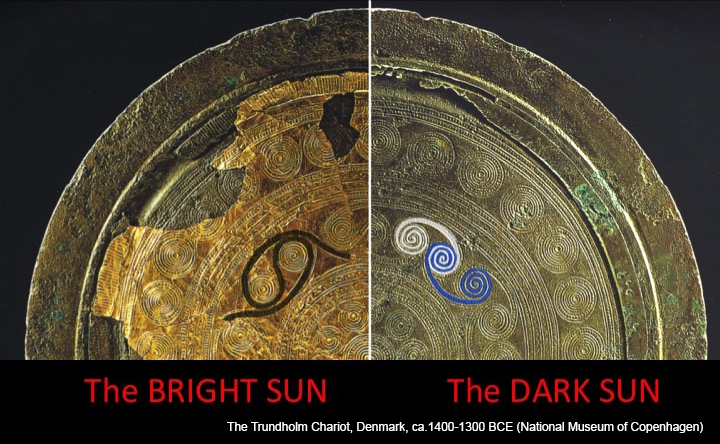
Contact Michelle Jacobson
Email mjacobson@ioa.ucla.edu
Phone
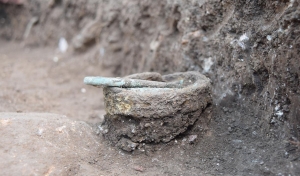 SPEAKER:
SPEAKER:
Dr. Willeke Wendrich
Professor, Dept. of Near Eastern Language and Cultures
Director, Cotsen Institute of Archaeology
UCLA
After five years of work in Ethiopia the UCLA Shire Archaeological Project has established close collaborations with four Ethiopian universities, national, regional and local offices and the population living around the site of Mai Adrasha. In December 2019 this culminated in a workshop to discuss the future of the archaeological site of Mai Adrasha. I will discuss the results of the excavations and survey in the tension field of different ideas and interests in both the past and the future.
Register for this Cotsen Virtual Pizza Talk here! You will recieve instructions on viewing the talk after registering.
Contact Michelle Jacobson
Email mjacobson@ioa.ucla.edu
Phone
- ‹ previous
- 9 of 22
- next ›



